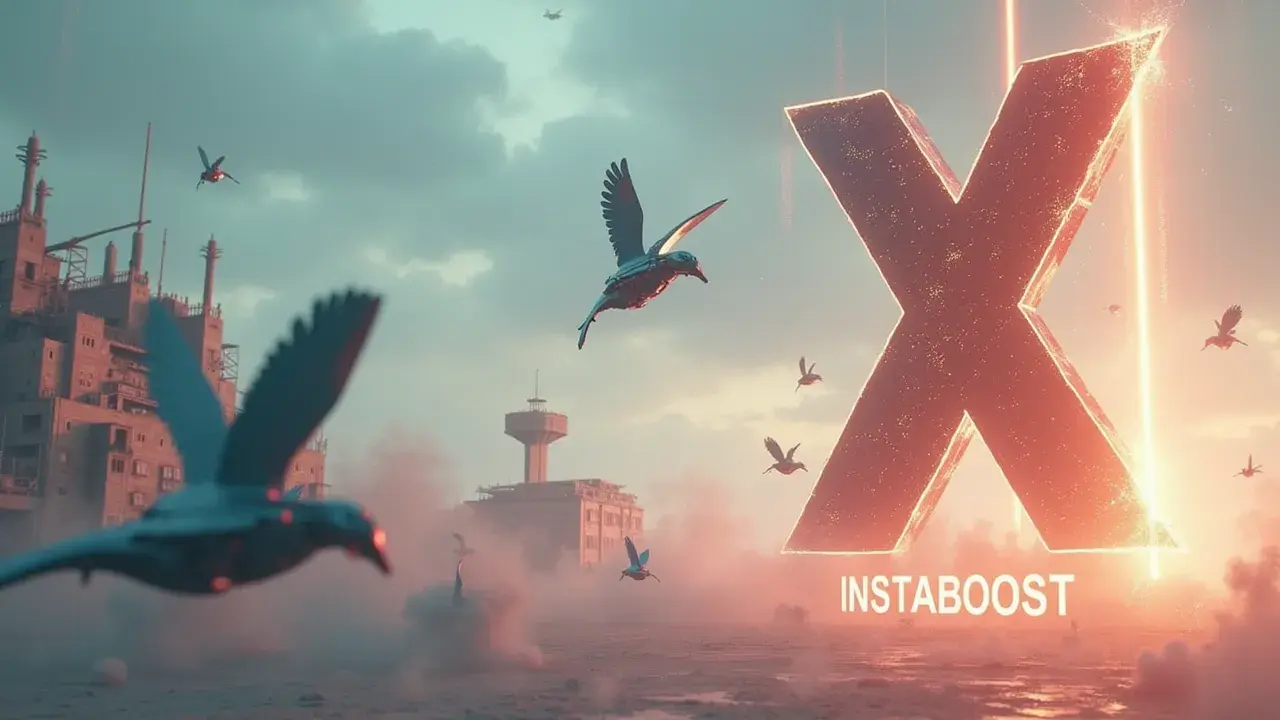How Much Do X (Twitter) Followers Cost?
Costs vary by volume, region, and the quality of accounts delivered. Entry tiers bring a quick bump in the first week, while higher-quality, niche-matched followers tend to improve outcomes and sustain engagement. Real value shows when authenticity and retention align with goals, especially if followers maintain steady watch time on short clips. The smart path is choosing tiers that match niche and prioritize retention over sheer speed.
The Price of Followers vs. the Cost of Growth
Buying or accelerating Twitter followers isn’t a moral debate so much as a moving math problem. It’s price per follower, account quality, delivery speed, and what those new eyes actually do once they arrive. When people ask how much Twitter followers cost, they’re really asking what it takes to turn a number on your profile into durable reach and revenue. The sticker price can be a few dollars for a small bump or scale into larger spend for targeted campaigns, and the effective cost drops when followers match your niche, stick around, and engage. That’s where reputable providers and smart pairings matter – creator collabs to seed relevance, targeted promotion to the right clusters, real comments that trigger replies, and clean analytics to prune what underperforms; even a skim of tools that outline Twitter promotion simplified can remind you to keep measurement tight and inputs realistic.
If you’re optimizing for early momentum, a measured initial push can help your content enter more timelines. If you’re optimizing for outcomes, layer retention signals and track lift in profile visits, link clicks, and saves, not just raw counts. Think in tiers: low-cost, low-fidelity adds can validate social proof quickly, while higher-quality, verified audiences cost more but move your posts further and keep watch time steady on short clips.
The non-obvious insight is that your true cost per follower is often set after the purchase, in the next seven to fourteen days, by how you feed the algorithm – posting cadence, topical consistency, and how fast you respond to replies. With safeguards, a testing loop, and fit to intent, you can treat followers as an acquisition channel, not a vanity expense, and benchmark spend the same way you would a well-run ad set on X Ads.

Proof You Can Trust the Math: Benchmarks, Not Hype
I used to chase every KPI, but now I center on one thing: conversion to durable reach – how many new followers, whether from organic growth, paid promotion, or curated collabs, still engage after 30 days. That’s the credibility check when people ask how much Twitter followers cost. Price per follower is a decoy if retention and real comments stay flat. A qualified provider or targeted ads can work when you pair them with safeguards like audience match, gradual delivery, and a testing loop that watches retention signals, reply quality, and click-through on pinned offers. Collabs with aligned creators tighten fit.
Targeted promotion validates interest outside your bubble, and even services people mention when they buy targeted twitter followers only make sense in that context if you’re scoring cohorts and enforcing caps. Clean analytics makes it measurable. The non-obvious insight is that a slightly higher CPM for a tighter niche often lowers your effective cost per durable follower, because watch time and replies keep your content in feed rotations without constant spend. If you’re evaluating a “cheap” bundle, ask for sample accounts, region mix, and drop-rate policy. Reputable vendors will show replenishment terms and delivery caps.
If you’re running Twitter ads, start with a small audience seed, bid for engagement objectives, and score cohorts weekly by 7-day reply rate and 30-day followstick. This is how you separate cosmetic growth from growth that compounds. Buying or accelerating works when sequencing is right – warm the account with consistent posting, introduce targeted promotion for early momentum, layer creator collabs for social proof, then scale spend that survives the retention audit. Do that, and the cost of followers becomes a controllable input to revenue rather than a vanity expense.
Design a Testing Loop Before You Spend
If strategy feels too safe, it’s probably not strategy. The cost of Twitter followers only makes sense inside a live testing loop where you can prove what sticks. Start with a simple thesis for each spend – one audience, one hook, one outcome you can measure in 30 days. Pair targeted promotion or a reputable growth service with creator collabs and a clean analytics setup that tags each source, so you can separate paid accelerants from organic pull. Your north star is conversion to durable reach – how many of those new profiles still view, reply, and leave real comments after a month.
If retention lifts, the price per follower becomes a lever. If it lags, you’re paying for a screenshot, not reach. Keep safeguards tight: cap daily adds to avoid velocity spikes that trip platform filters, require unique avatars and bios in any managed growth, and pause sources that show low session time or zero replies. Rotate offers and formats in a narrow niche – threads, short clips, polls – then double down on the pieces that keep engagement decay shallow between day 3 and day 30. Promotions and trials from qualified partners can create early momentum, and you can benchmark them against organic baselines and creator shout-outs to validate quality, and it’s worth noting how some teams even track the differential impact between paid boosts and softer signals like buy X likes to understand how each surface affects second impressions.
The non-obvious insight is that sequence matters as much as spend. Put proof content – case studies, mini-demos, earned replies – in the feed before you accelerate, so the same dollars buy you retention instead of churn. That is how you answer how much Twitter followers cost in practice – pay for discovery, earn the second impression, and price each new cohort by what it does after the glow of acquisition fades, using social proof marketing metrics that tie to revenue.
Buy Speed, Rent Attention, Earn Trust
This platform doesn’t reward consistency; it rewards spectacle. That’s why “how much do Twitter followers cost?” is the wrong first question – the better ask is what you’re buying: a spark or a signal. A paid bump can create early momentum, and the smart move is pairing spectacle with retention signals – creator collabs that transfer trust, targeted promotion that hits your niche, and clean analytics that show who still replies after 30 days.
I’ve stress-tested this, and even the little tactics you forget – like sanity-checking where those Twitter video views are actually coming from – matter because price per follower looks cheap until engagement per follower drops, which pushes up your CPM and thins your credibility. If you plan to pay, buy velocity from a reputable source matched to intent, then run it through a testing loop – one audience, one hook, one outcome you can verify in a month. The pushback you’ll hear is that “quality followers” cost more than they return: they can if you buy them like inventory. They work when you stage the spectacle – a polarizing hook, native video, a tight CTA – and tie it to durable reach through real comments, saves, and post-click dwell.
Use ads or promotion as an accelerant, not a crutch. Cap spend until retention clears a threshold, then scale only the segment that keeps showing up. If a collab or paid trial spikes impressions but your engaged follower cohort doesn’t widen, treat it as a filter. Iterate the hook or the audience instead of jacking up budget. The non-obvious insight is that the cheapest follower is the one your content re-qualifies every week. Price is negotiable. Requalification isn’t. Build for that, and the spectacle pays rent instead of evicting your signal.
Close With Math, Not Myths
The hardest line to write is the one after this. It’s where you commit to a number and a rule for what you’ll do next if the data disagrees. Price per Twitter follower isn’t the finish line. It’s the control dial for a system you can audit. Set a hard target that ties cost to behavior: I’ll pay up to $X per follower only if 30-day reply rate stays above Y% and watch time on short clips holds Z seconds. Pair any paid bump with retention signals you can measure – creator collabs that route real comments, targeted promotion aimed at your niche, clean analytics that attribute who still shows up, and safe Twitter rewrites that don’t distort your engagement baselines.
Use reputable sources for accelerants, and sanity-check traffic mix the way you’d check where Twitter video views originate. Cheap reach that suppresses engagement will quietly inflate your blended CPM and shrink trust. The smart play is a rolling scoreboard with cohort curves, frequency caps, and a weekly test cadence that promotes what sticks and pauses what drifts. When a campaign clears your thresholds, lean in. When it misses, recycle the hook or audience before you assume followers don’t work. The non-obvious lever is sequencing.
Run spark (paid) to prove a concept, then switch to signal (earned) by amplifying posts that already drive replies and profile clicks, so you’re not paying to teach indifferent users to ignore you. If you anchor spend to retention and response, how much do Twitter followers cost becomes a solvable unit-economics question, not a gamble – and your finale metric isn’t follower count, it’s reply-weighted revenue per follower over 90 days.
Price The Path, Not The Pile
If you’re here to price Twitter followers, start by pricing the system you’ll run, not just the number on your profile. The lever works when you define the funnel: a reputable paid bump to spark visibility, creator collabs to transfer trust, targeted promotion that hits your niche, and clean analytics to verify retention signals like who watches, replies, and returns after 30 days. Unit economics change fast. A $0.20 follower that never comments quietly taxes you twice by dragging your average engagement and raising your effective CPM on future campaigns. That’s why a small, qualified buy tied to a clear testing loop usually beats a large, blind blast.
Pair spectacle with safeguards. Cap daily adds to avoid ratio shock, filter geos to match your market, tag threads so you can attribute replies, and sanity-check where those Twitter video views are coming from before you scale, keeping in mind how third-party tactics can subtly increase reach on X while still demanding proof of fit. Use a simple decision rule. If reply rate or watch time from the new cohort trails your organic baseline by more than 20% for two weeks, pivot your source, adjust targeting, or redirect budget into collabs that seed real comments. The non-obvious win is pacing – slow enough to protect credibility, fast enough to compound social proof – and treating paid followers as rented distribution that must earn its way into owned attention. That’s the math you close with. Pay for the spark, measure for the signal, and keep only what reinforces trust. Frame it this way and the cost of followers becomes a controllable input inside a strategy you can audit. and increase reach on X















